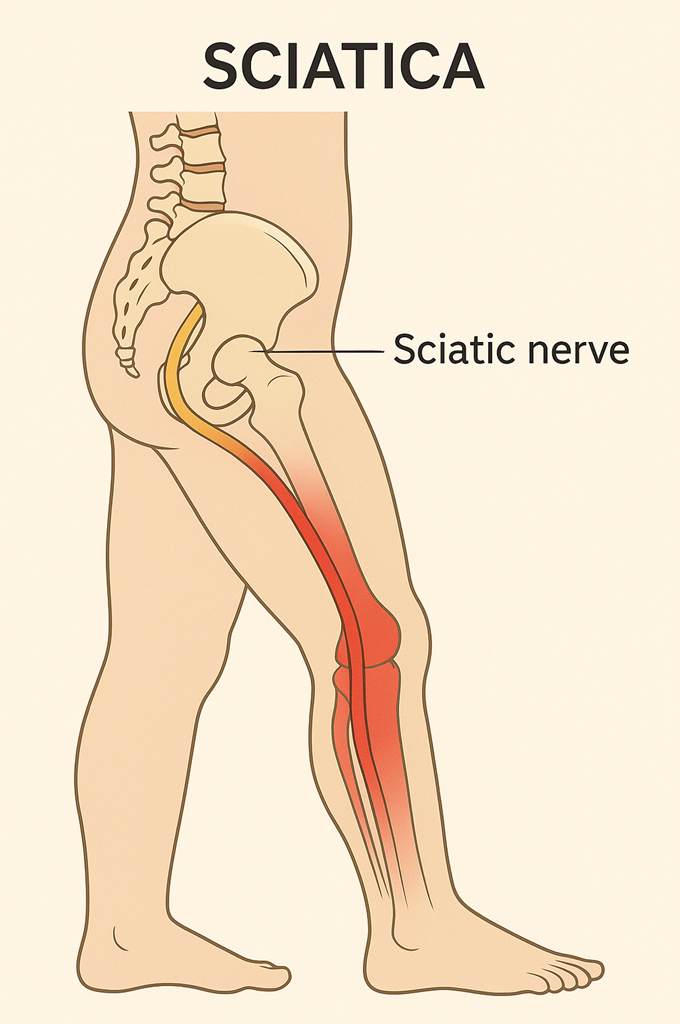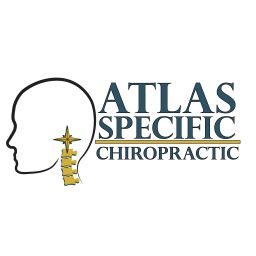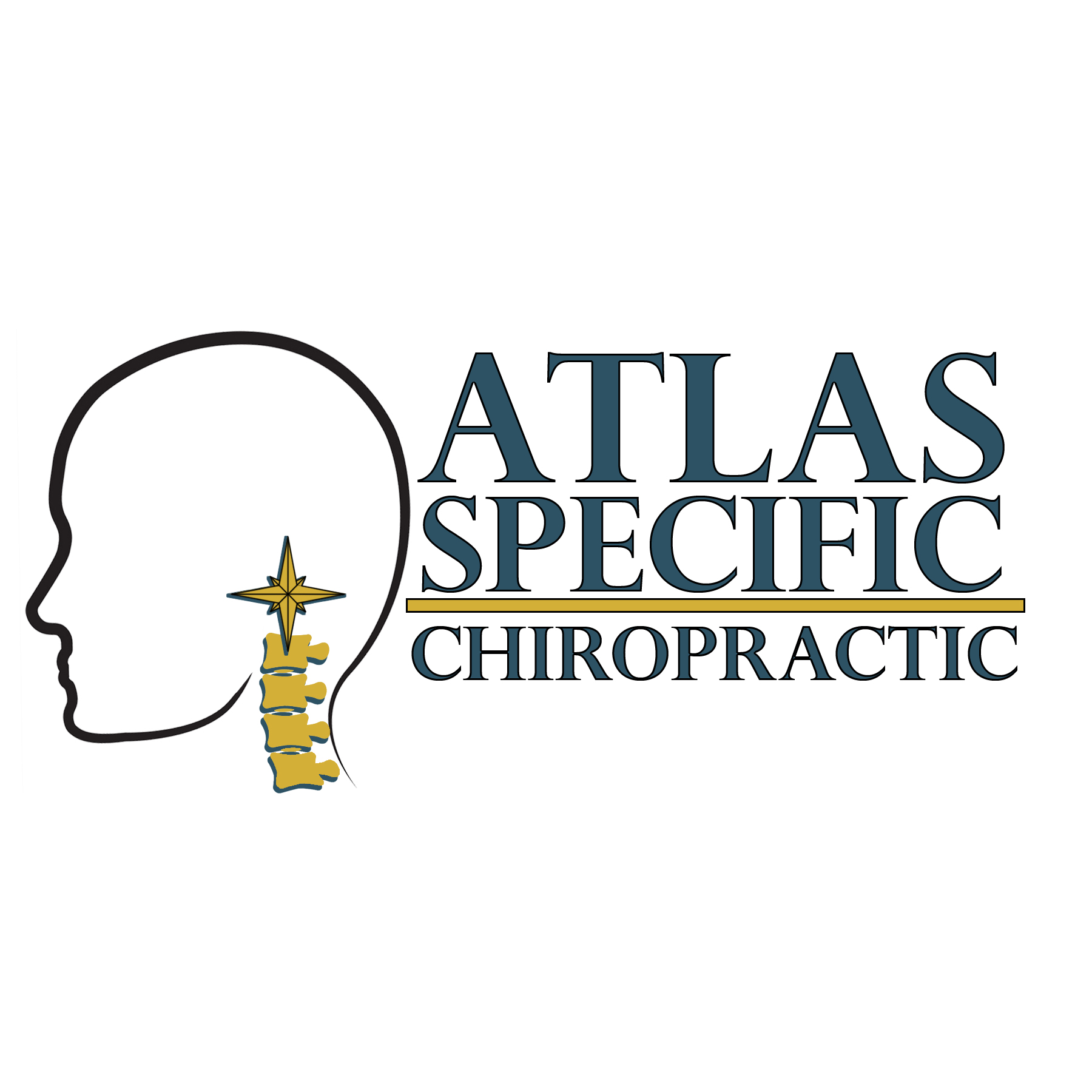
Sciatica Pain
Natural Relief for Low Back Pain, Leg Pain, and Nerve Irritation Through Precise Chiropractic Care
Understanding Sciatica
Sciatica is one of the most common—and most painful—conditions people face.
It happens when the sciatic nerve becomes irritated or compressed, leading to pain that radiates from the lower back into the hip, buttock, and leg.
People often describe sciatica as:
-Sharp or shooting pain down the leg
-Burning or electric sensations
-Numbness or tingling
-Weakness in the leg or foot
-Pain that worsens with sitting or standing too long
-Pain that improves when lying down
-Difficulty walking or bending
Sciatica can affect one or both sides, and symptoms can range from mildly annoying to completely debilitating.
But sciatica is rarely “just a back issue.”
It is almost always a structural and neurological problem, influenced by how the entire spine—and particularly the upper cervical spine—is aligned.
What Causes Sciatica?
Sciatica is the result of pressure or irritation on the sciatic nerve, typically from:
-Lumbar disc bulges or herniations
-Spinal degeneration or arthritis
-Piriformis syndrome
-Pelvic imbalance
-Poor posture or sitting habits
-Repetitive strain
-Pregnancy-related shifts
-Old injuries or falls
-Muscle guarding or spasms
However, many people don’t realize that the root cause often begins much higher in the spine, especially at C1 and C2.
The Upper Cervical Connection to Sciatica
While sciatica originates in the lower back, the upper cervical spine plays a vital role in posture, muscle tone, nerve communication, and how the entire spine compensates for misalignment.
When the atlas (C1) or axis (C2) shifts out of place:
1. Your posture changes
Your head tilts or shifts, forcing the rest of the spine to compensate.
This can create:
-Uneven hips
-A rotated pelvis
-Increased pressure on the lumbar discs
-Muscle imbalance throughout the spine
2. Nerve pathways become irritated
The brainstem regulates nerve tone throughout the entire spinal cord.
Upper cervical misalignment can cause the body to tighten certain muscles—especially in the lower back, pelvis, and hips.
3. The lumbar spine begins to break down
Over time, abnormal posture increases stress on the lower back, eventually irritating or compressing the sciatic nerve.
This explains why:
-Many sciatica cases begin without a clear injury
-Pain often returns even after traditional treatments
-Patients feel “twisted” or “uneven”
-Sciatica switches sides
-People have both neck issues AND sciatica
Correcting the upper cervical spine restores balance from the top down, reducing strain on the lower back and sciatic nerve.
Why Traditional Treatments Often Provide Only Temporary Relief
Most sciatica treatments focus only on the lower back:
-Muscle relaxers
-Pain medications
-Stretching
-Massage
-Physical therapy
-Steroid injections
-Ice/heat
-Rest
While these may decrease symptoms temporarily, they do not correct structural misalignment or restore normal nerve communication.
If the upper cervical spine is still misaligned, the lower back continues to compensate—causing the sciatic nerve to remain irritated.
Upper cervical chiropractic addresses the root cause, not just the painful area.
How Upper Cervical Chiropractic Helps
At Atlas Specific Chiropractic, we use a precise, gentle, and scientific approach to restoring alignment and relieving nerve pressure.
✔ Functional Neurological Scans (Tytron)
These detect nerve irritation patterns that can affect posture, muscle tone, and sciatic nerve tension.
✔ Precision Upper Cervical X-rays (Three Views)
Measured to 1/100th of a degree and millimeter to identify exact misalignment of the atlas and axis.
✔ AHKC (Advanced HIO Knee-Chest) Technique
A gentle correction that realigns the upper neck without twisting, cracking, or popping.
✔ Full-Spine Compensation Changes
When the head returns to its correct position, the lower spine naturally begins to relax:
-Hips level
-Pelvis stabilizes
-Lower back pressure decreases
-Sciatic nerve irritation reduces
Patients often report:
-Relief in leg pain
-Better balance
-Less lower back stiffness
-Improved posture
-More flexibility
-Better long-term stability
Do You Have Sciatica Linked to Upper Cervical Misalignment?
You may be a candidate for upper cervical care if you have:
-Sciatica that comes and goes
-Pain down one or both legs
-Lower back tightness with no clear cause
-Sciatica after sitting or standing too long
-A history of neck pain, headaches, or forward head posture
-Hip or pelvic imbalance
-Numbness or tingling in the foot or calf
-Pain that worsens during stress
-Sciatica that “switches sides”
These patterns strongly suggest a root cause in the upper cervical spine.
A Long-Term Solution That Starts at the Top
Sciatica can disrupt your work, your sleep, your movement, and your quality of life—but it doesn’t have to be permanent.
When your spine is aligned from top to bottom, the body can finally heal the way it was designed to.
At Atlas Specific Chiropractic, we help patients throughout Hiawatha and Cedar Rapids, Iowa find lasting relief from sciatica through gentle, precise upper cervical care that realigns the spine, calms the nerves, and restores movement naturally.
📞 Call (319) 343-8540 or schedule your first visit today to start your recovery.
Open Hours
Monday, Tuesday, Thursday
9:00 - 6:00
Wednesday
12:00 - 6:00
friday
9.00 - 2.00
© Atlas Specific Chiropractic | Powered by Webflow.




